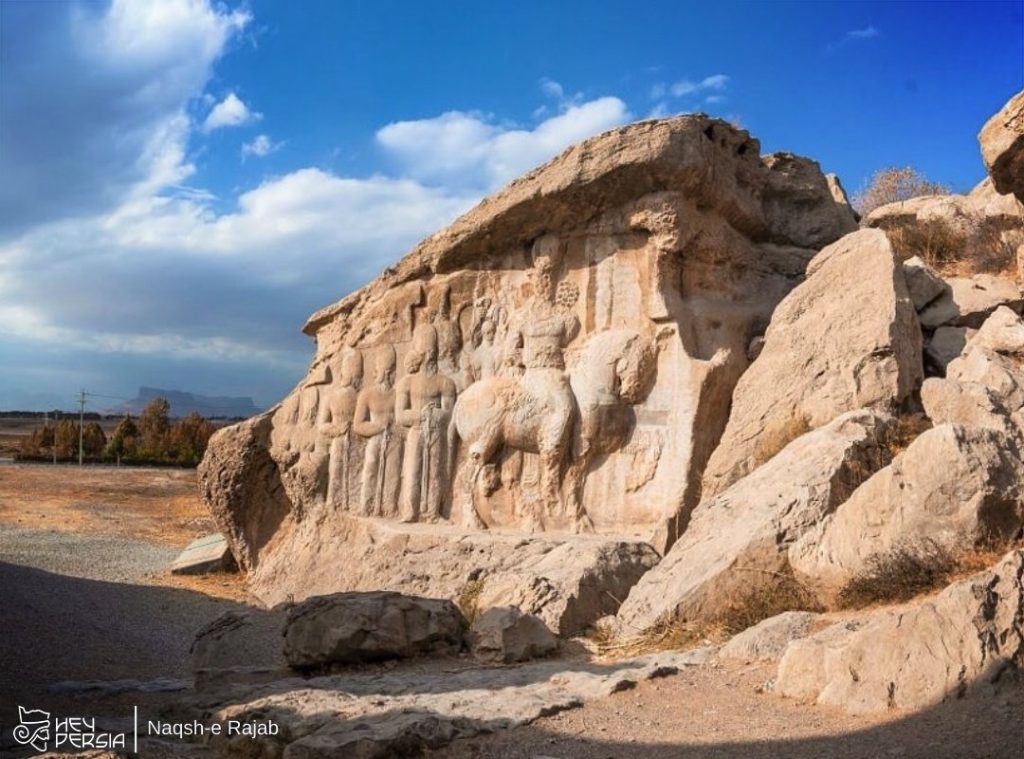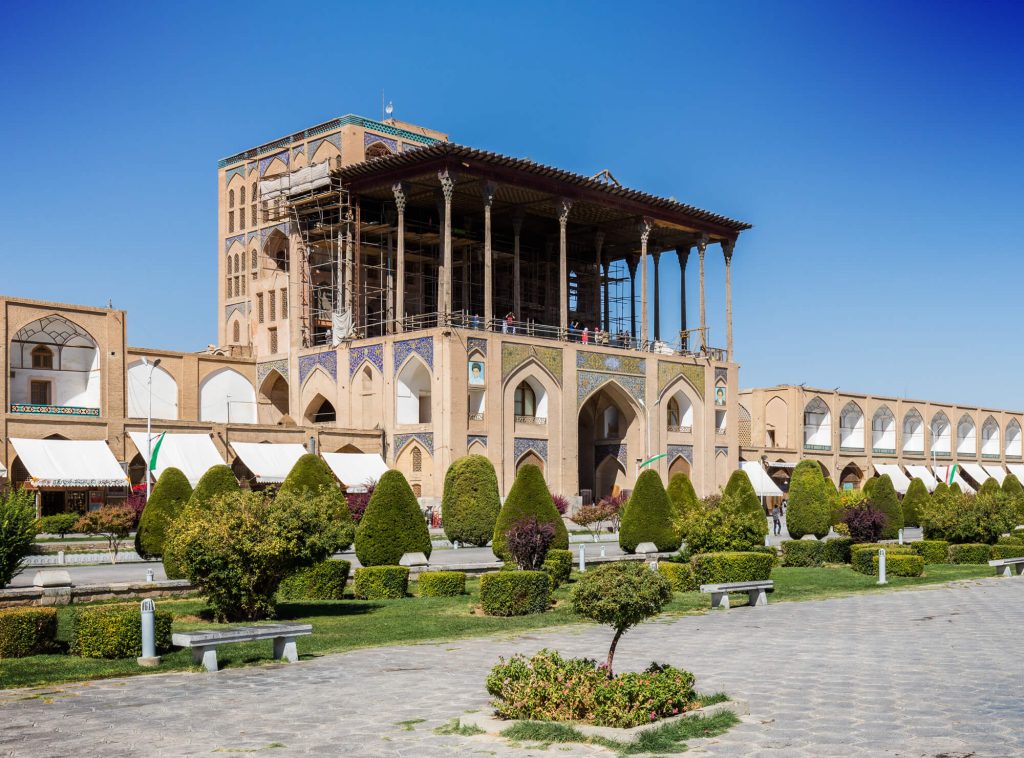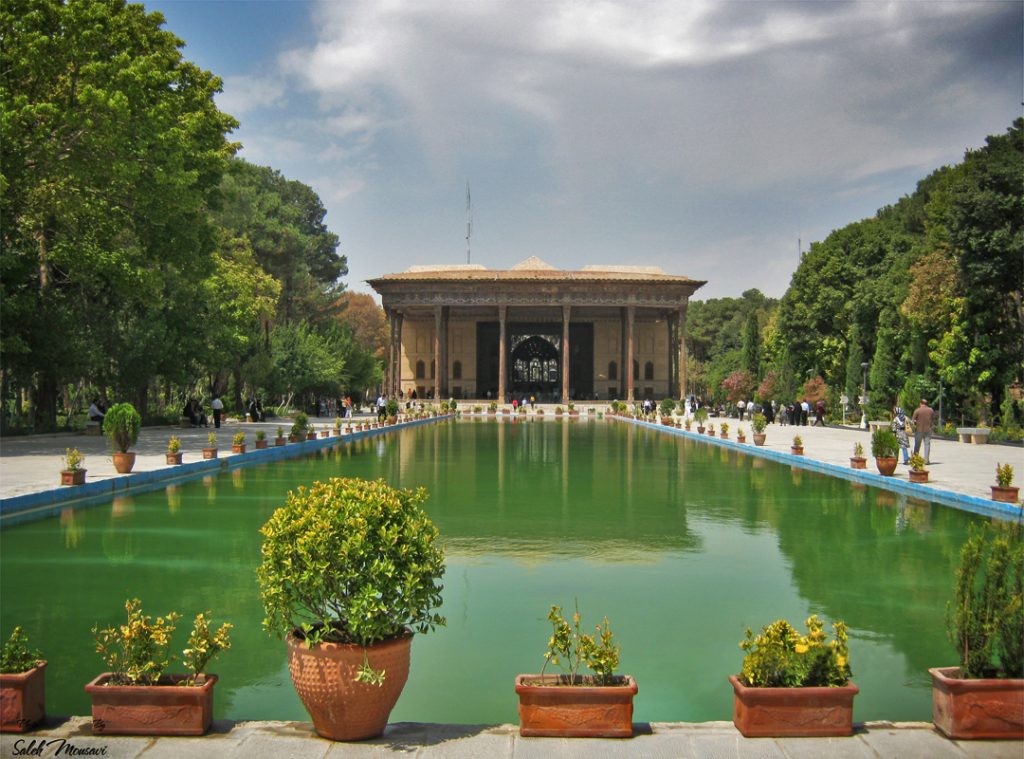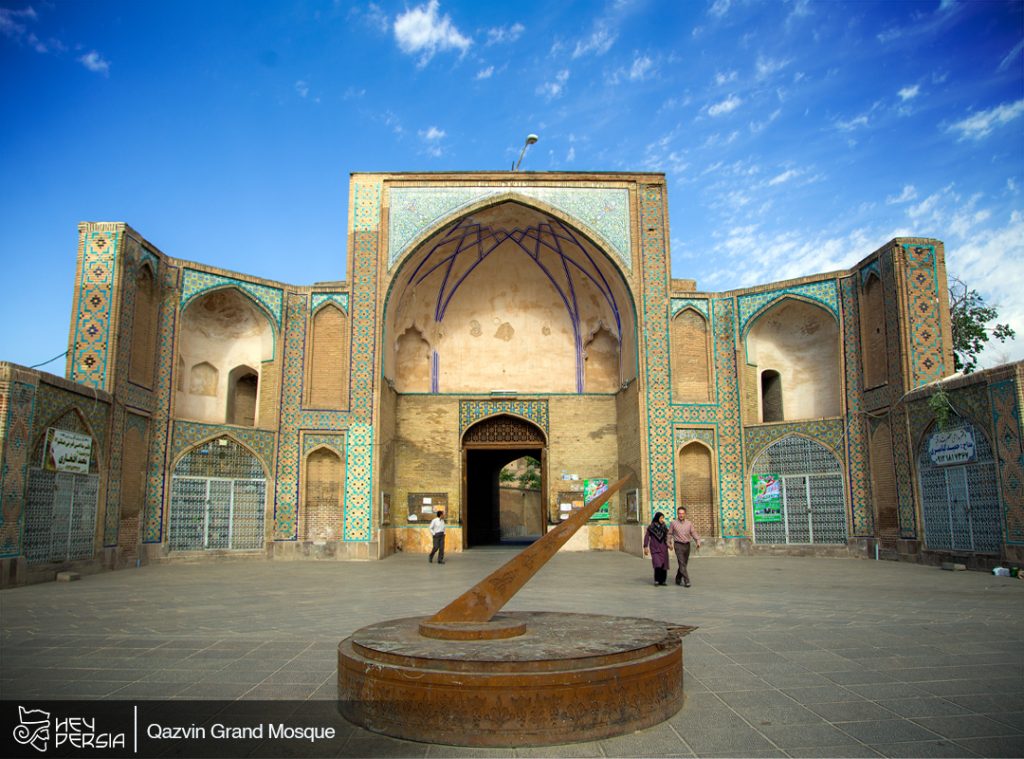“Naqsh-e Rajab In Iran” is a 3-prominent rock carvings installed on the slope of a cave-like but open mountain. This complex is one of the most valuable ancient carvings of Iran in Fars province, which unfortunately; most of our country’s tourists are not aware of and most of them are visited by foreign tourists. If you are interested in the history and familiarity with the tourist attractions of Shiraz, join us on the Hey Persia blog on a virtual trip to Naqsh-e Rajab Fars.
Where is Naqsh-e Rajab Fars?
Naqsh-e Rajab, is one of the most valuable ancient carvings of Iran, which is in a mountain cleft Rahmat, 13 km from the city of Marvdasht and 3 km from Persepolis, on the right side of the royal road. The distance between Naqsh-e Rajab and Shiraz is 67 km and it takes about 40 minutes to reach this ancient site from the provincial center.
As mentioned, among the places of interest near Naqsh-e Rajab are Takht-e Persepolis and Naqsh-e Rustam. The distance from Naqsh-e Rajab to Naqsh-e Rustam is about 3 kilometers, and it takes less than 5 minutes to reach this complex. For information on when to visit, it is to refer to the “Official Website of the World Heritage Site of Takht-e Persepolis”.
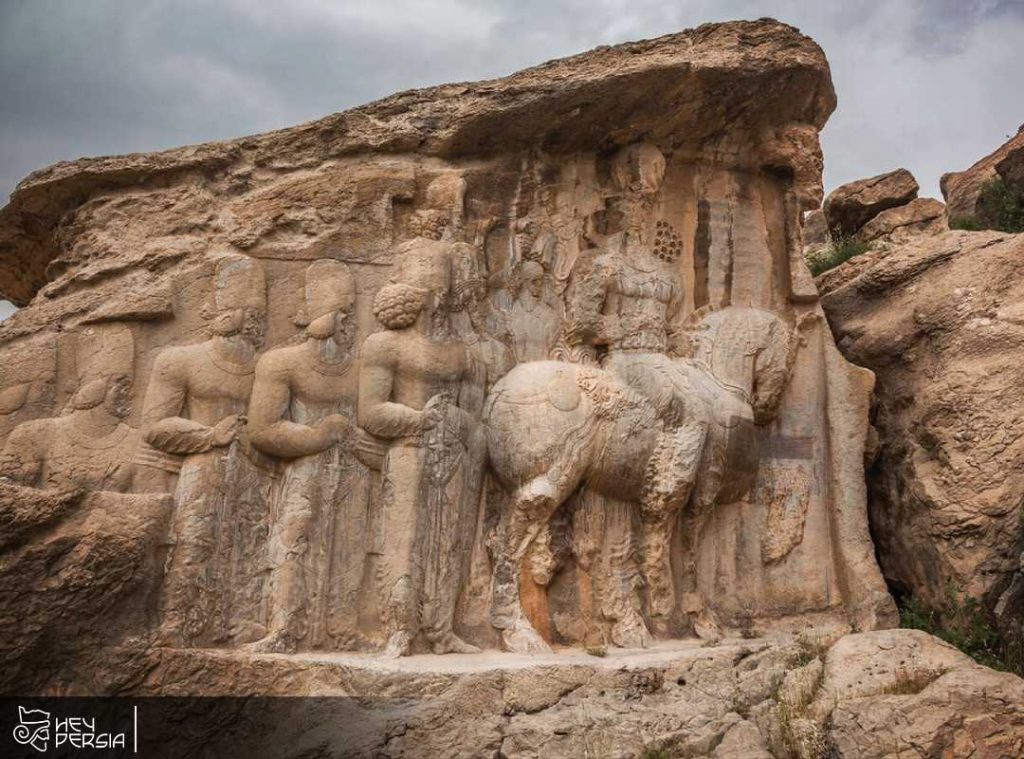
Learn more about Naqsh-e Rajab Shiraz
Knowing the history of Naqsh-e Rajab helps us to gain more information about the Sassanid period and, consequently, the history and culture of our country. The area where the Naqsh-e Rajab rock carvings are located was very prosperous and green in the past, and there were many houses and springs. On the other hand, the nearby city of “Istakhr” was one of the important cities of the Sassanid period and the birthplace of Ardashir Babakan and his son Shapur I.
Considering the points mentioned, this area was a very suitable space for holding ceremonies, various celebrations and memorials such as the coronation ceremonies of the first and second Sassanid kings, etc.
What is the reason for naming Naqsh-e Rajab?
You may also be asking yourself; Why is this area Naqsh-e Rajab? There is no reliable information about the reason for naming Naqsh-e Jab. However, according to historians and researchers, in the past there was a coffee house near the complex whose owner was Rajab.
Let’s get to know the reliefs of Naqsh-e Rajab Marvdasht better!
The reliefs of Naqsh-e Rajab, as we mentioned, are 3 reliefs, each of which we will introduce below:
The first chamber
This relief is located in the north of the complex at a height of one and a half meters above ground level. In this relief, you see the image of Shapur I, the second Sasanian king, riding a large horse, with 9 dignitaries standing behind him. It seems that this group has honored to be in the presence of Shapur I to receive the imperial crown or attend a joyous gathering, etc.
On the chest of the Shah’s horse, a text is in two Pahlavi scripts (4 lines) and Greek script (6 lines). The content of the relief is: “Horamzdaparst, Lord Shapur, Shah of Iran and Aniran, sent by God, son of Ahuramazdaparst Lord Ardashir Shah of Iran and Aniran, sent by God, son of God Papak Shah”
The second chamber; Image of the coronation of Ardashir Babakan
The second chamber is 4.5 meters wide and is located in the middle of the complex and shows the coronation ceremony of Ardashir Babakan, the founder of the Sasanian state. In this relief, you see the image of 8 women, men and children, and the priest Mobadan intends to give the king a ring or crown.
Behind the king, there are 2 people, one of whom is a royal attendant and the other is a state elder who is standing in a respectful manner. 2 children are also standing in front of the king, one of whom is to be the crown prince.
Behind the priest, there are also two women, one of whom is the queen and the other is a nobleman of the court. Each of them is performing a ceremony of respect for the king separately. On the left and outside the chamber, you see a person who raises his right hand in a respectful manner and shows a stone inscription to others. This stone inscription belongs to Kartir, the priest Mobadan, and its content is about his religious services to the king. This stone inscription has 30 lines written in Pahlavi script, and about 20 of them are fortunately intact.
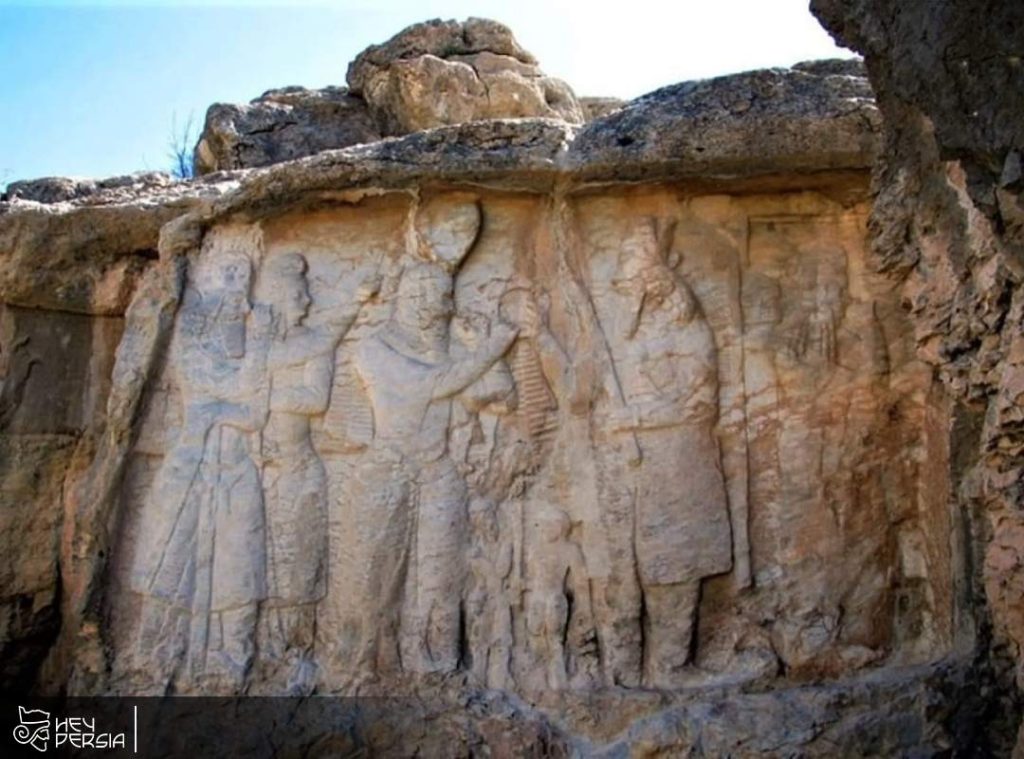
The third chamber; Coronation Ceremony of Shapur I
The third Majles is the coronation ceremony of Shapur I, son of Adashir Babakan. In this relief, Shapur, riding a sturdy horse, receives the royal crown from the great cleric, who is also riding a horse. Behind Shapur are courtiers and elders. According to the findings, the first person is Shapur’s son and the future crown prince of the Sasanian dynasty, Hormuz.
Best time to visit Naqsh-e Rajab in Marvdasht
Due to its geographical location and due to the hot weather, the best time to visit this ancient complex is the beginning of spring, autumn and winter, when the weather is cooler.
Naqsh-e Rajab In Iran
In this article, we talked to you about the historical monuments of Naqsh-e Rajab. If you have traveled to this historical complex or have more information about it, you can write them in the comments and suggestions section and provide them to us. We thank you in advance for your cooperation.
The Hey Persia tourism magazine launched with the aim of introducing Iranians who are enthusiastic about this land and water to a greater knowledge. If you also want to know more about our vast country, you can register on the Hey Persia website and learn about the most important events and tourist places in our country.

